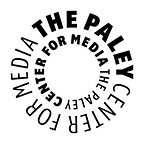Costume Designer Lou Eyrich Dishes on “American Horror Story”’s Epic Wardrobe
In case you haven’t heard, American Horror Story’s first-ever museum exhibit has taken The Paley Center for Media in Los Angeles by storm. It’s no surprise, really. The costumes and props from the aesthetically enthralling show were always sure to impress. Despite the passionate fanfare though, perhaps no one is as excited about the momentous occasion as AHS costume designer, Lou Eyrich. We had the opportunity to ask Eyrich about her captivating costumes and all that goes into shaping the unique characters that the show is comprised of. Check out our interview with the Emmy Award–winner below to get the inside info on the making of American Horror Story:
1. Which character’s wardrobe was the most difficult to design/envision?
“Overall, probably the COUNTESS, as she was meant to be timeless, yet contemporary as she’s living in 2016, Also, we wanted to make sure we created a character unlike Lady Gaga. But truly the most difficult part of designing for American Horror Story is creating new characters for the same returning actors every season. We strive each season, to make the audience forget that, for example, Tate from first season is worlds apart from Kit, Kyle, Jimmy, Mr. March, or Edward Mott played in respective seasons.”
2. You’ve spanned quite a few different time periods on this show, which one was your favorite to tackle?
“I love mixing period with contemporary — so Coven was really fun to design. But I would say FREAK SHOW was the most challenging and rewarding.”
3. What goes into creating one of the monster’s wardrobes?
“We work closely with special effects make-up and the hair department when designing a specialty monster/creature. Ryan Murphy always has the template in mind, and we all do illustrations based on his ideas. Once we incorporate all of our sketch ideas into one, the masks get molded and painted, the fabrics get sourced, costumes constructed and then the aging/dying process begins. This process gets massively condensed, as it’s TV, and we get a short prep period! Twisty the Clown, as an example, had many sketch ideas for costumes and masks until we landed on the final costume. We prepared several muslins for John Carroll Lynch, from jumpsuits to two-piece sets to accommodate the hot weather in New Orleans.”
4. Do the actors ever have any input on what their character wears? If so, how do you collaborate and who was the most interested in collaborating with you?
“I love collaborating with the actors. Again, Ryan Murphy usually has strong input on the character, and we follow his lead. Sarah Paulson and I love to collaborate. She has great instincts and has been on all seasons, so I’d say she is the most interested. But Evan always comes in with great ideas and Denis is very involved as well. All are a DREAM to collaborate with!”
5. What do you think makes the Paley Center the perfect place for American Horror Story’s first museum exhibit?
“I’m still pinching myself to see if this opportunity is real… as it’s a once in a lifetime chance to display our work! The Paley Center is cutting edge with all their exhibits and has created a space for the public to have an enhanced involvement in their favorite shows, beyond simply viewing episodes each week/season. I love this space for our exhibit in particular, as individual seasons have their own area to create the unique tones of each one.”
Paley Matters is a publication of The Paley Center for Media.
American Horror Story: The Style of Scare free exhibit is open from 12–5 pm, Wednesdays to Sundays through July 30, 2017, at the Paley Center in Los Angeles. Admission is FREE.
